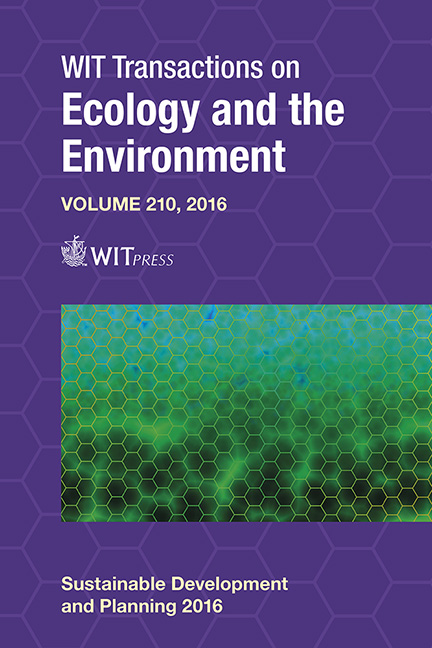Towards Sustainable Development And Self-sufficient Communities In The Rural Areas Of Egypt
Price
Free (open access)
Transaction
Volume
210
Pages
12
Page Range
149 - 160
Published
2017
Size
2,124 kb
Paper DOI
10.2495/SDP160131
Copyright
WIT Press
Author(s)
M. Z. Ayman
Abstract
Egypt is a unique country, thanks to its special geographical location in the world. From that leading role certain actions ought to be taken to put Egypt on the right track of development and to achieve benefits through sustainable development.
Sustainable development in Zamarna Village was achieved and the volume of achieved development was ensured using its ecological footprint as an indicator of sustainability, which the village had in 2016. It had an ecological footprint far more than its carrying capacity and after applying the experiment the current footprint has been less than its carrying capacity. Through applying principles of sustainable development along with the useful theoretical framework from the Zamarna Village experiment and considering the nature of urban composition in Egypt, we can put the general framework of sustainable development and self-sufficient communities in the rural areas of Egypt.
This research considers how to achieve sustainable development in the rural communities where work is done in three integrated main categories, namely, the socially restorative community, economical self-sufficiency and regenerative ecological capital. The objectives of this research can be summarized as follows.
To understand what the environment of rural areas is and what it is composed of, as well as to define the mutual impact of each component on the other, studying and analyzing “Zamarna Village” as an experiment to use the useful theoretical framework, putting a model to achieve sustainable development and self-sufficient communities in the rural areas of Egypt.
Keywords
sustainable development, self-sufficient communities, rural area, ecological footprint, socially restorative community, economical self-sufficiency, regenerative ecological capital





